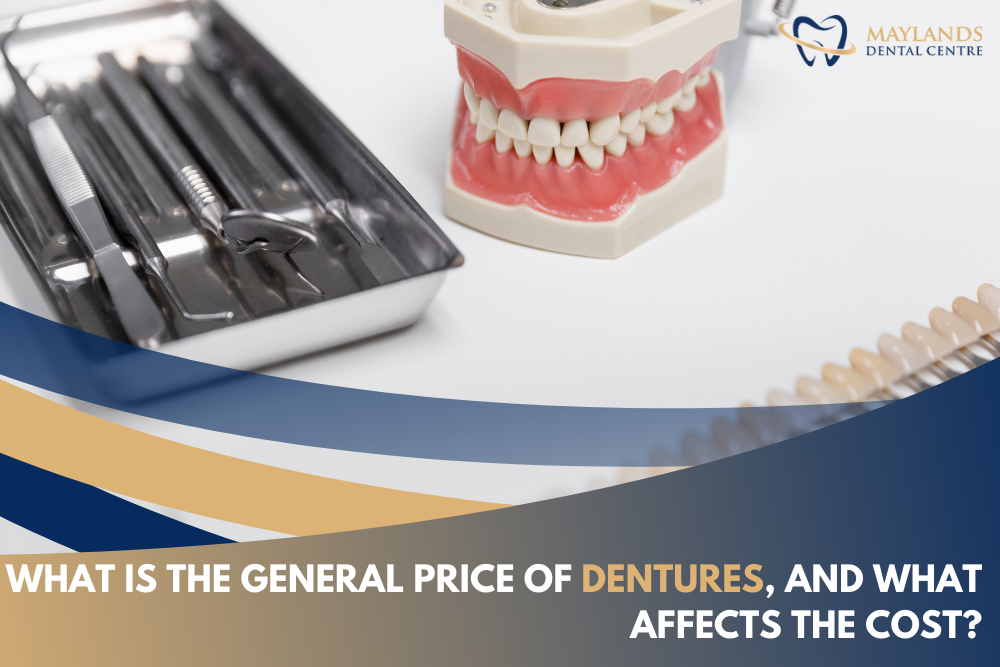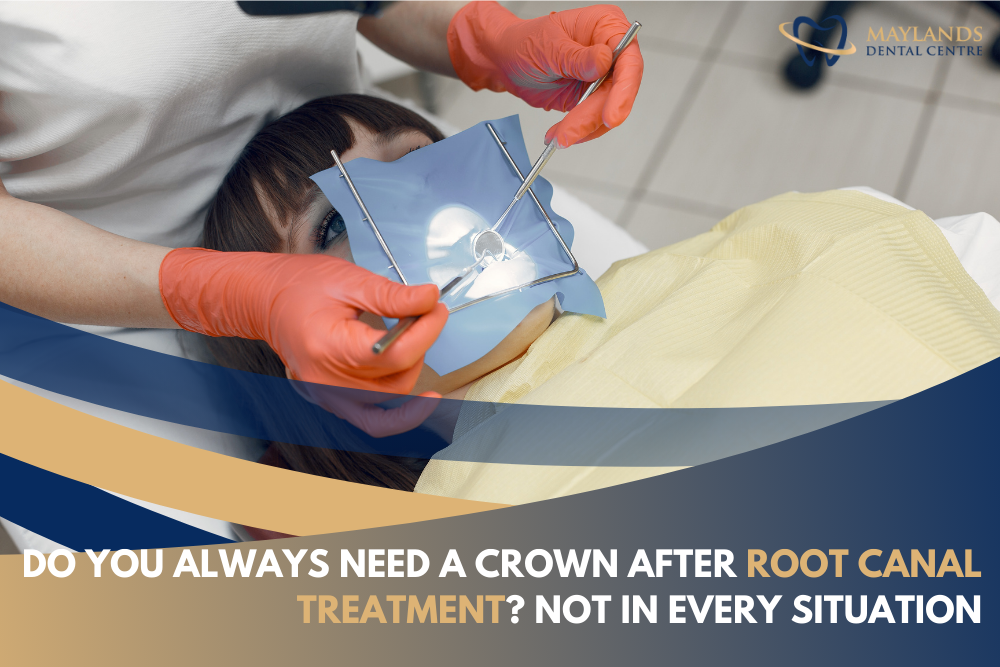If you’ve recently had your teeth professionally whitened, you might be wondering, “What should you not do after teeth whitening?” It’s a great question—and one that can have a big impact on how long your results last. After all, the success of any whitening treatment depends not just on the procedure itself, but also on how you care for your smile afterwards.
Your teeth are more porous and sensitive in the first 24-48 hours following a whitening treatment. During this time, certain foods, drinks, and habits can lead to staining or sensitivity if you’re not careful. Making small but informed choices during this period can help extend the brightness of your smile and reduce discomfort.
In this blog, we’ll explore common post-whitening mistakes and how you can avoid them. From sipping on coffee too soon to skipping your oral care routine, we’ll guide you through what to avoid—and why it matters. With the right care, you can enjoy your whiter smile for longer and protect the health of your teeth along the way.
Blog Navigation
- Summary of the Content:
- Why Aftercare Matters After Professional Teeth Whitening
- 1. Avoid Dark-Coloured Beverages and Foods
- 2. Don’t Smoke or Use Tobacco Products
- 3. Skip Sugary or Acidic Foods Temporarily
- 4. Avoid Using At-Home Whitening Products Right After Treatment
- 5. Don’t Ignore Your Dentist’s Instructions
- Final Thoughts
Summary of the Content:
- Tooth enamel can become more porous after a professional teeth whitening treatment, which increases the risk of stains and sensitivity.
- Proper aftercare helps prolong the results of whitening and can reduce the chances of post-treatment discomfort.
- Teeth whitening performed by qualified dental professionals has been shown in clinical research to be a safe cosmetic procedure.
- Dark-coloured foods and drinks—such as tea, coffee, red wine, and soy sauce—may cause discolouration while teeth are still vulnerable.
- Tobacco use can stain freshly whitened teeth and is alaso linked to gum problems and delayed healing.
- Acidic or sugary foods and beverages may lead to enamel erosion and increased tooth sensitivity in the days after treatment.
- It’s recommended to delay the use of at-home whitening products, as they can aggravate sensitivity or irritate the gums.
- Following the dentist’s aftercare instructions is essential, as these are based on individual factors, such as sensitivity and enamel strength.
Why Aftercare Matters After Professional Teeth Whitening

After a professional teeth whitening procedure, the immediate hours and days that follow play an important role in the overall outcome. While a brighter smile may be visible right away, the treatment doesn’t end there. What happens after can affect both the longevity of the results and the comfort of the recovery. During this time, the enamel undergoes changes that affect its interaction with foods, drinks, and temperature.
Below is a closer look at what usually occurs in the enamel after whitening:
- Increased porosity:
Whitening agents open microscopic channels in the enamel to lift stains. This makes the enamel more permeable, allowing certain pigments from food and drink to be absorbed more easily. - Heightened sensitivity:
The deeper layers of the tooth, particularly the dentine, may become temporarily exposed. This can increase the likelihood of discomfort when consuming hot or cold items. - Reduced mineral density:
Some whitening treatments can mildly demineralise the enamel surface. Although this is usually a short-term effect, it can increase the risk of sensitivity and erosion in the early days following treatment. - Temporary dehydration:
Whitening can draw moisture from the enamel, contributing to an initially brighter appearance. However, it also reduces the enamel’s natural protective capacity for a short period.
These temporary changes underscore the importance of post-treatment care. Allowing the teeth to recover without added stress from acids, pigments, or temperature extremes helps preserve brightness and minimises the chance of post-whitening discomfort.
Moreover, while these effects usually subside quickly, they highlight the value of having whitening performed under qualified clinical care. Studies have shown that whitening is generally safe when performed by dental professionals who evaluate risks and apply treatment under controlled conditions. Dentists assess enamel condition, sensitivity concerns, and individual factors to deliver treatment that is appropriate and monitored.
1. Avoid Dark-Coloured Beverages and Foods
For those asking, “What should you not do after teeth whitening?”, an important step is to avoid dark-coloured foods and drinks. After a whitening treatment, the enamel becomes temporarily more porous, making it easier for stains to absorb into the surface of the teeth. During this period—usually the first 24-48 hours—these items can have a stronger impact on tooth colour than usual. Understanding which foods and drinks carry a higher risk can help patients adjust their diet without feeling overwhelmed.
Below are examples of common foods and drinks that may contribute to staining:
- Coffee and tea:
Both beverages contain tannins, which tend to adhere to the enamel and contribute to yellow or brown discolouration. - Red wine:
This drink is acidic and deeply pigmented, which allows it to penetrate porous enamel and leave noticeable stains. - Tomato-based sauces:
These sauces are both acidic and richly coloured, increasing the chances of enamel discolouration after a teeth whitening procedure. - Dark berries and beetroot:
These foods are high in natural pigments, which can leave stains on the enamel, especially when consumed raw or in juice form. - Soy sauce and balsamic vinegar:
These dark-coloured liquids can cling to the enamel and may stain your teeth following whitening treatment.
While avoiding these items entirely may not be practical, there are ways to minimise their effects. A few simple habits can help reduce their impact without drastically altering your routine.
Here are some tips to reduce staining during recovery:
- Drink through a straw:
This limits contact between dark liquids and the front surfaces of the teeth. - Rinse with water after meals:
Rinsing the mouth with water after eating can help remove surface pigments before they absorb into the enamel. - Avoid lingering sips or bites:
Minimising contact time with highly pigmented foods may reduce the risk of early staining. - Opt for light-coloured meals:
Following a white diet with foods like rice, chicken, and yoghurt can minimise staining while enamel remains porous. - Brush with a soft-bristled toothbrush:
Brushing gently about 30 minutes after eating allows time for enamel to recover from acid exposure and helps remove staining residues safely.
These small adjustments are helpful in the first few days after whitening, when enamel is more reactive to pigments. Rather than giving up favourite foods, a short-term dietary approach may help reduce the chance of early staining.
2. Don’t Smoke or Use Tobacco Products
Tobacco use—including cigarettes, cigars, vaping products, and smokeless tobacco—can significantly affect the appearance of your teeth, particularly in the days following a whitening treatment. When enamel is temporarily more porous, pigments and chemicals in tobacco can absorb more easily, leading to faster discolouration and reduced whitening effectiveness.
Freshly whitened teeth are especially vulnerable to visible staining. The following are common ways tobacco impacts the cosmetic results of whitening:
- Staining of enamel:
Nicotine and tar can quickly absorb into the outer surface of the teeth, causing yellow or brown stains soon after whitening. - Uneven colouration:
Continued smoking may result in irregular tooth discolouration, particularly near the gum line or in hard-to-reach areas. - Surface residue buildup:
Tobacco residue can cling to the enamel, leaving a rougher surface that may attract pigments more readily in the future.
In addition to its cosmetic impact, tobacco also contributes to broader oral health risks. These effects may not appear immediately, but they can have long-term consequences:
- Dry mouth and reduced saliva flow:
Smoking decreases saliva production, which plays a vital role in protecting teeth by washing away debris and neutralising acids. - Greater risk of gum disease:
Tobacco restricts blood flow and weakens the body’s defences, increasing the likelihood of inflammation, infection, and long-term damage to the gums. - Slower recovery after dental care:
Tobacco may interfere with healing after whitening or other treatments by limiting oxygen and slowing tissue recovery. - Increased long-term risks:
Continued tobacco use has been associated with gum recession and oral cancer, according to published research.
Avoiding tobacco—especially during the early recovery phase—may reduce the risk of staining. It can also promote more stable oral conditions throughout the whitening recovery period. While results can vary, this approach forms part of a broader effort to maintain oral health over time.
3. Skip Sugary or Acidic Foods Temporarily
Studies indicate that after teeth whitening, enamel is more vulnerable to erosion and sensitivity when exposed to sugary or acidic foods and drinks. These substances can weaken the enamel surface or irritate sensitive teeth, which may affect comfort and the durability of whitening results. Dental professionals recommend avoiding these items during the initial recovery period to protect enamel and encourage healing.
Certain sugary foods and drinks are especially likely to increase sensitivity and enamel erosion after the teeth whitening process. These include the following:
- Soft drinks and energy drinks:
High sugar and acid content can rapidly wear down enamel and increase tooth sensitivity after whitening. - Candy and sweets:
Sugary foods provide a food source for bacteria, which produce acids that further damage enamel. - Fruit juices with added sugar:
The combination of natural acids and added sugars can intensify enamel irritation and sensitivity. - Pastries and desserts:
Sticky and sugary, these foods tend to cling to teeth and promote acid formation by oral bacteria.
In addition to sugary foods, acidic items also increase the risk of enamel erosion and sensitivity after treatment. Common examples to avoid after teeth whitening include the following:
- Citrus fruits:
Oranges, lemons, limes, and grapefruits contain natural acids that may erode enamel and increase sensitivity during recovery. - Vinegar-based dressings and pickled foods:
These acidic condiments can erode enamel and contribute to discomfort after treatment. - Tomato-based sauces:
While nutritious, their acidity and pigmentation may be harsh on newly whitened teeth. - Carbonated beverages:
Even sugar-free sodas are acidic and can soften enamel, raising sensitivity risk.
During this period, choosing the following milder food and drink options may reduce irritation and help maintain oral comfort:
- Water and milk:
Water helps rinse away pigments and acids, while milk provides calcium and proteins that are gentle on sensitive teeth. - Plain yoghurt:
It contains probiotics and has a neutral pH, making it less likely to irritate enamel or cause sensitivity. - Steamed or cooked vegetables:
Cooking softens vegetables and reduces their acidity, making them easier on enamel and less likely to cause discomfort. - Plain rice and lean proteins:
These foods are bland and non-acidic, providing essential nutrients without risking enamel erosion or irritation.
4. Avoid Using At-Home Whitening Products Right After Treatment
After professional whitening, giving your teeth time to recover is an important part of the process. This recovery phase allows the teeth and gums to return to their normal condition before additional whitening treatments are introduced. Patience during this time helps reduce the chance of irritation and other issues.
There are several reasons why it’s important to delay using at-home whitening products immediately after professional treatment:
- Increased sensitivity:
Teeth are often more sensitive after whitening, and applying more whitening agents can worsen this sensitivity and cause discomfort. - Gum irritation:
Frequent or improper use of bleaching gels or whitening strips can irritate or inflame the gums, especially when used too soon after professional treatment. - Enamel strain:
The enamel needs time to recover following exposure to whitening chemicals. Applying additional products may add stress and increase the risk of damage. - May affect consistency of results:
Using whitening gels, strips, and other products too early may disrupt the treatment effects and impact the uniformity of tooth colour. - Uneven whitening:
Without professional guidance, at-home treatments may lead to patchy or uneven results, especially if teeth are sensitive or enamel is compromised.
Patients considering further whitening treatments should consult their dentist for personalised advice. A dental professional can assess tooth health, sensitivity, and the timing of previous treatments to recommend an approach suitable for individual needs.
5. Don’t Ignore Your Dentist’s Instructions
Every patient’s teeth and oral health are unique, which means post-treatment advice will vary based on individual needs. Following your dentist’s specific teeth whitening aftercare instructions is essential to help manage sensitivity, protect enamel, and maintain optimal results.
When providing post-whitening recommendations, dentists consider a range of factors, including the following:
- Enamel strength:
Patients with naturally thinner or weaker enamel may need gentler care or a longer recovery period to avoid damage and sensitivity. - Tooth sensitivity:
If a patient has pre-existing sensitivity, their aftercare plan may include special products, such as anti-sensitivity toothpaste. Additional techniques may also be recommended to reduce discomfort during the healing phase. - Lifestyle habits:
Diet, smoking, and oral hygiene routines are evaluated to tailor advice that minimises staining and supports enamel health. - Medical history:
Certain medical conditions or medications can affect healing and sensitivity, so dentists adjust their recommendations accordingly for patient safety. - Previous dental treatments:
Past procedures, such as fillings, crowns, or veneers, can influence how whitening affects the teeth and determine specific aftercare needs.
Attending follow-up appointments enables dental professionals to monitor the teeth’s response, manage any issues promptly, and refine aftercare advice as necessary. Maintaining open communication with your dental team throughout your whitening journey promotes ongoing oral health and helps achieve favourable outcomes.
Final Thoughts
Taking care of your smile after treatment is just as important as the whitening procedure itself. A common question that arises is, “What should you not do after teeth whitening to help maintain a bright and healthy smile?” The early recovery period plays a key role in how long your results last and how comfortable the experience is.
Avoiding common pitfalls—such as consuming certain foods, smoking, or using whitening products too soon—can help protect your teeth while they’re still vulnerable. Practical oral care habits and following your dentist’s advice also play an important part in reducing sensitivity and preventing early staining. Since every patient’s needs are different, tailored professional advice remains important for maintaining long-term dental health. With the right approach, you can extend the benefits of your whitening treatment and feel confident in your smile for longer.
If you’re looking for personalised guidance on protecting your whitened teeth, the team at Maylands Dental Centre in Perth can provide evidence-based advice and treatments tailored to your needs. We work closely with patients to create care plans that suit individual oral health and lifestyle factors. This collaborative approach helps you maintain a healthy, confident smile long after your treatment is complete.


 By Maylands Dental Centre
By Maylands Dental Centre 





 General Dentistry
General Dentistry Cosmetic Dentistry
Cosmetic Dentistry Restorative Dentistry
Restorative Dentistry Dental Implants
Dental Implants Orthodontics
Orthodontics Sleep Dentistry
Sleep Dentistry Childrens Dentist
Childrens Dentist Cosmetic Procedures
Cosmetic Procedures Health Funds
Health Funds Government Schemes
Government Schemes Payment Plan Options
Payment Plan Options